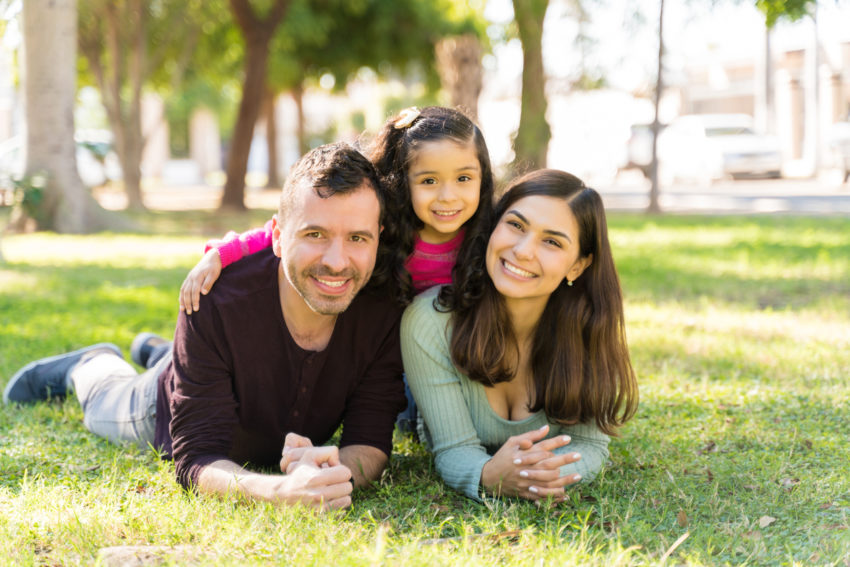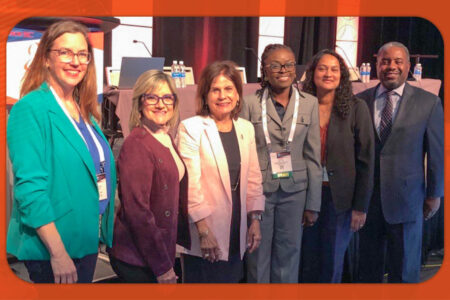
Share On Social!
Everyone should have a fair and just opportunity for the best possible health and well-being.
That’s health equity. And that’s the mission of the Health Opportunity and Equity (HOPE) Initiative. The HOPE Initiative is led by the National Collaborative for Health Equity and Texas Health Institute in partnership with Virginia Commonwealth University’s Center on Society and Health. The Robert Wood Johnson Foundation provides funding.
The HOPE Initiative tracks data on 27 indicators related to social and economic factors, community & safety, physical environment, access to healthcare, and health outcomes.
“Our unique analyses use an opportunity framework to set aspirational but achievable goals to improve life outcomes—especially populations of color most affected by systemic racism and conscious and unconscious bias,” according to the HOPE Initiative’s website.
In addition to providing the data on current health opportunities, the HOPE initiative sets benchmarks for achieving health equity.
“HOPE data identifies where residents of individual states and the country are doing well and where states can do more to help residents be healthier. In doing so, HOPE calculates three important factors that help state and federal leaders, advocates, and other stakeholders shape policies and practices: 1) where the gaps in opportunity are among people of different races and ethnicities; 2) what goals for achieving equity look like; and 3) how far they need to move the dial to make these goals a reality,” according to the HOPE Initiative’s website.
Let’s take a look at how Latinos compare to other groups in health opportunities in five key areas.
How do Latinos Compare in Health Outcomes?
The Hope Initiative measures five health outcomes to analyze overall population health, wellness, and mortality.
Here’s how Latinos measured in the five health outcomes:
- Adult Health Status – 34% (53% for whites)
- Child Health Status – 85% (93% for whites)
- Infant Mortality (# per 1,000) – 4.9 (4.8 for whites)
- Low birthweight – 7% (7% for whites)
- Premature Mortality (# per 100,000) – 216 (430 for whites)
Latinos had the worst outcome for the Adult Health Status indicator.
This is consistent with research that says Latinos are disproportionately affected by diabetes, cancer, and heart disease.
How do Latinos Compare in Social and Economic Factors?
To measure the Social and Economics Domain, the HOPE Initiative examines five systemic factors that measure financial, educational, and occupational opportunities that affect social mobility.
Here’s how Latinos measured in the five social and economic factors:
- Affordable Housing – 58% (74% for whites)
- Employment – 92% (95% for whites)
- Livable Income – 45% (69% for whites)
- Post-Secondary Education – 39% (65% for whites)
- Youth in School or Working – 86% (90% of whites)
Latinos perform worse than other groups when it comes to attaining livable income, post-secondary education, and affordable housing.
Latinos face disparities and systemic barriers when it comes to these areas.
“The high school dropout rate among Latino students is 17.6%; higher than Black (9.3%) and White students (5.2%). Lower educational attainment among Black and Latino students is linked to an increased risk of institutionalization, poorer physical and mental health, and reduced lifetime earning/economic potential,” according to a Salud America! research review.
How do Latinos Compare in Community and Safety Factors?
To measure community and safety, the HOPE Initiative looks at how social surroundings influence health.
Some groups experience differences due to systemic and historical racism, according to HOPE.
“Differences in social conditions often reflect historical practices or policies that have benefited certain people over others or isolated populations in specific geographic areas. As a result, socially disadvantaged groups or residents of certain neighborhoods experience more limited health opportunity,” according to the HOPE Initiative’s website.
Here’s how Latinos stand in community and safety factors:
- Low Homicide – 66% (75% for whites)
- Low Physical Assault – 61% (77% for whites)
- Low Poverty Concentration – 60% (85% for whites)
- Low Robbery – 23% (47% for whites)
- Low Sexual Assault – 83% (79% for whites)
Latinos fair worse than white people in community and safety factors, although Black and Indigenous populations have even worse outcomes than Latinos.
Poverty is a large contributor to health inequities for Latinos.
“Latino families are more likely to live in poverty than white families. Child poverty rates are more than twice as high for Latino children than White children (23.7% vs 8.9%). Poverty’s material hardships ─ difficulty meeting basic food, medical, housing, and transportation needs ─ lead to worse health and life outcomes,” according to a Salud America! research review.
How do Latinos Compare in Physical Environment?
For physical environment, the HOPE Initiative tracks four indicators that measure how places where people live and work affect health and well-being.
Here’s how Latinos measured in physical environment factors:
- Food Security – 88% (87% for whites)
- Home Ownership – 48% (73% for whites)
- Housing Quality – 74% (85% for whites)
- Low Liquor Store Density – 88% (83% for whites)
While Latinos fared better than Black and Indigenous populations, they had one of the lowest rates for home ownership.
“Latino families are burdened by high housing costs, eviction, and displacement. The percentage of Latinos who are ‘housing cost burdened,’ spending 30% or more of household income on housing costs, grew from 42.4% in 2000 to 56.9% in 2015,” according to a Salud America! research review.
How do Latinos Compare in Access to Health Care?
HOPE Initiative also measures access to health care through five factors that assess the coverage, affordability, and availability of preventative and acute care.
Here’s how Latinos stand in the five factors on access to health care:
- Access to Primary Care – 82% (78% for whites)
- Access to Psychiatric Care – 86% (75% for whites)
- Affordable Health Care – 78% (90% for whites)
- Dedicated Health Care Provider – 64% (84% for whites)
- Health Insurance Provider – 78% (91% for whites)
Latinos have some of the lowest rates in all factors, compared to other groups. This is consistent with research about Latinos’ lack of access to health care.
“At least 27% of Latinos currently report having no usual health care provider. The percentage of Latinos with no health care coverage dropped from 26.2% to 15.1% from 2013 to 2016 under the Affordable Care Act (ACA); but it remains much higher than the percent drop among uninsured non-Latino whites from 14.1% to 6.6% in that same span,” according to a Salud America! research review.
In some areas, Latinos face compound issues of lack of health care and socioeconomic issues.
“Hispanic Texans not only face socioeconomic challenges in acquiring livable income and post-secondary education, but they also have some of the lowest rates to health care access such as access to primary care, having a personal doctor, and having health insurance coverage. Hispanic adults are also least likely to be in excellent or very good health compared to all other groups,” according to the HOPE Initiative’s website.
How Can We Advocate for Latino Health?
It’s clear that Latinos face many barriers to equal health opportunities.
But what can be done to fix this?
Policies like expanding Medicaid coverage and eliminating barriers to health insurance would allow for better access to health care for Latinos.
The expansion of other federal programs, like SNAP and CHIP, can help address food insecurity. Communities can invest in their neighborhoods to create more affordable housing and safe, accessible outdoor areas that give better opportunities for physical health.
We also have to take an equitable approach to the systemic injustices behind health inequities, especially amid the current COVID-19 pandemic.
For example, you can ask your city leaders to declare racism a public health crisis.
Download the free Salud America! “Get Your City to Declare Racism a Public Health Crisis Action Pack”!
The Action Pack will help you gain feedback from local social justice groups and advocates of color. It will also help you start a conversation with city leaders for a resolution to declare racism a public health issue along with a commitment to take action to change policies and practices. It will also help build local support.
By The Numbers
23.7
percent
of Latino children are living in poverty



